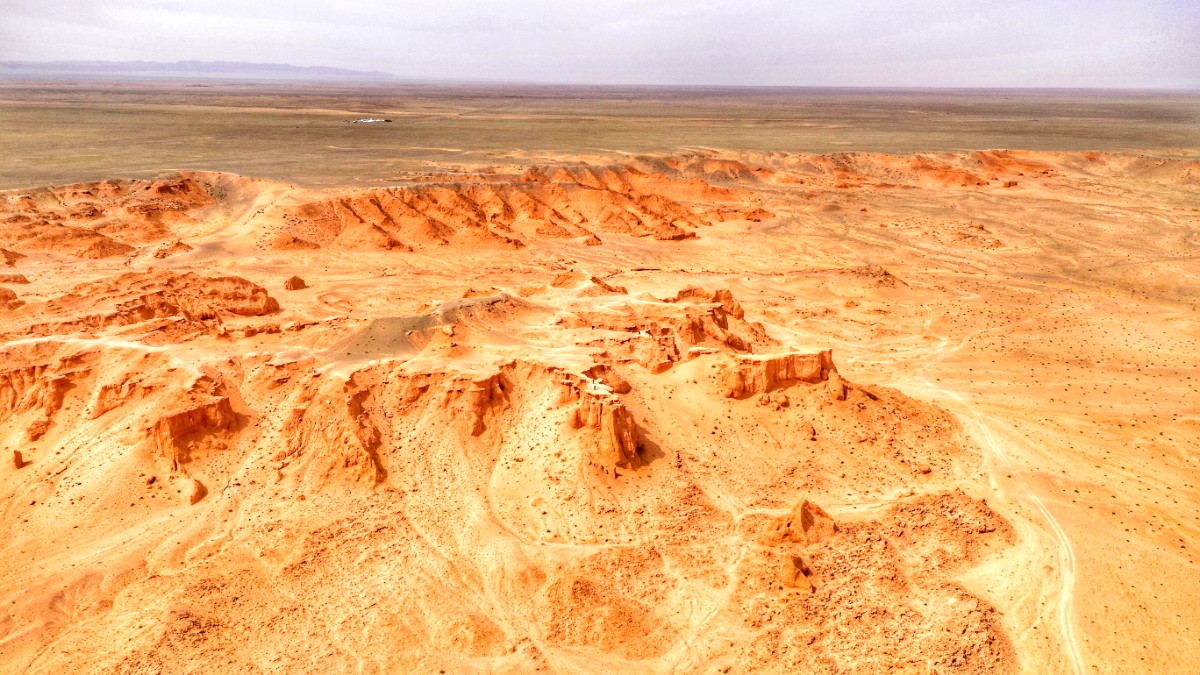
Mongolia
The Gobi is a sprawling, arid region, covering southern Mongolia and northern China. This cold desert features varied terrain: vast steppes, rugged mountains, and rocky plateaus. Only about three percent is classic sand dunes. Its immense size spans approximately 1,600 kilometers (1,000 miles) from southwest to northeast and 800 kilometers (500 miles) north to south, encompassing about 1.3 million square kilometers (500,000 square miles).
The Gobi Desert has deep historical roots, a pivotal part of the ancient Silk Road. For centuries, this trade network moved goods, ideas, and cultures between East and West. Merchants, pilgrims, and explorers crossed its challenging expanses, making it a corridor for global interaction.
Beyond trade, the Gobi Desert was the heartland of the Mongol Empire. It was a strategic region for Genghis Khan and his successors, a base for campaigns that shaped much of the known world. Its open spaces suited rapid cavalry movements, a Mongol military signature. This landscape forged the resilience of nomadic warriors who built one of history's largest empires. The Gobi is also famed for paleontology. In 1923, at the Flaming Cliffs (Bayanzag), Roy Chapman Andrews found the first dinosaur eggs globally. This discovery reshaped paleontology and cemented the Gobi's reputation as a fossil trove. Numerous other dinosaur fossils, including Velociraptor and Protoceratops skeletons, have since come to light, making the Gobi a site for dinosaur research and exploration. These finds link to an ancient past, drawing scientists and travelers to its red cliffs.
The Mongolian Gobi brings together extreme landscapes, rich nomadic culture, and amazing paleontological wonders. It is a destination of vast, open spaces, where the horizon stretches endlessly and the sky looms large. Visitors encounter the singing sand dunes of Khongoryn Els, producing an ethereal hum when wind blows. The ice-filled canyon of Yolyn Am contrasts sharply, holding ice into summer months, a testament to the Gobi's extreme climate. The red cliffs of Bayanzag, glowing orange-red at sunset, take you back to the age of dinosaurs, where their eggs were first found.
Gobi wildlife includes rare, resilient species adapted to arid conditions. These include the critically endangered Gobi bear, the majestic wild Bactrian camel, and the swift Mongolian wild ass.
Experience the "singing sands" and climb immense dunes for panoramic views.
Hike into a narrow canyon that retains ice fields well into the summer.
Explore the red sandstone cliffs where the first dinosaur eggs were discovered.
Protecting much of the Gobi, this park showcases varied landscapes and wildlife.
Stay in traditional ger camps and meet local nomadic families.
The main exploration method in the Gobi is typically multi-day jeep tours. These tours are customary given the vast distances, limited infrastructure, and challenging terrain. Travelers generally stay in traditional ger (yurt) camps, an authentic and immersive experience. These camps offer a comfortable base, connecting guests with the nomadic way of life.
A Gobi journey transcends simple sightseeing. It is an adventure that submerges you in a landscape of extremes and a culture of deep resilience.
Singing sand dunes, ice-filled canyons, dinosaur fossil sites, and encounters with unique wildlife and nomadic herders.
Mongolia's Gobi Desert is a destination unlike any other, promising unforgettable moments and a profound connection to nature and heritage.
Each vista tells a story of survival and beauty.
Camel treks across vast dunes, star-filled nights under boundless skies, and the thrill of walking where dinosaurs once roamed make the Gobi a truly distinctive journey.
Explore stunning landscapes on foot, from rocky trails to soft sands.
Witness unparalleled night skies away from light pollution.
Live like a nomad in traditional felt dwellings.
Retrace the paths of ancient traders and empires. The Gobi's role as a Silk Road passage and Mongol Empire heartland shaped global history.
Warmest weather, most accessible, all tours active. Expect daytime heat, more tourists, higher prices.
Fewer crowds, milder temperatures. May brings winds/dust. September has cooler nights, some services wind down.
Authentic winter nomadic experience, very few tourists. Extreme cold, many tour operators closed, limited ger camp availability, roads impassable.
Citizens of many countries (USA, Canada, Germany, France, Italy, Russia, South Korea, Japan, Kazakhstan) enter visa-free for tourism. Stay durations vary (e.g., 90 days for US, 30 days for UK/EU). Verify current requirements with the Mongolian Ministry of Foreign Affairs or your embassy.
Citizens not on the visa-free list submit a tourist visa (Type J) application at a Mongolian embassy or consulate in their home country or residence.
Mongolia introduced an e-visa system in 2023 for tourist visas for citizens of certain countries. Check the official E-Visa Mongolia website for eligibility.